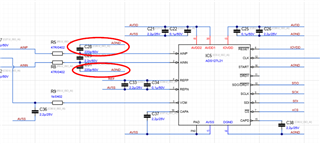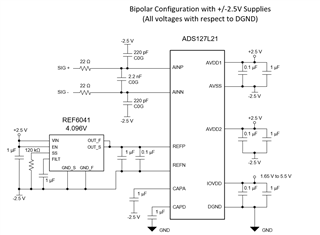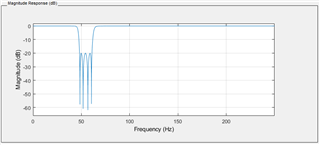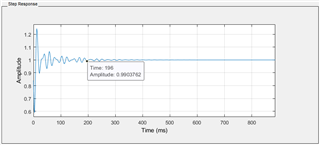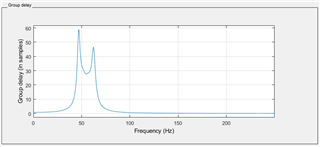Other Parts Discussed in Thread: INA851, TPS7A39, REF3425, TPS709, REF6025
Hi TI Team
Im planning to use the ADS127L21 in combination with an INA851. I use a +/-5 V supply for the INA851 and a +/-2.5 V supply for the ADC via a TPS7A39 LDO. Since there are no examples of a bipolar supply of the ADS127L21 I'm not so sure about my circuit. Especially about how to supply my REF3425 and if I need to bypass capacitors from AVDD1&2 and AVSS to AGND or if this isn't necessary.
You find the schematic below.
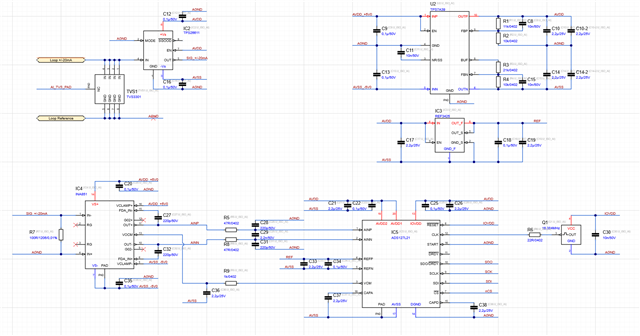
Thank you in advance!
Regards Theo


